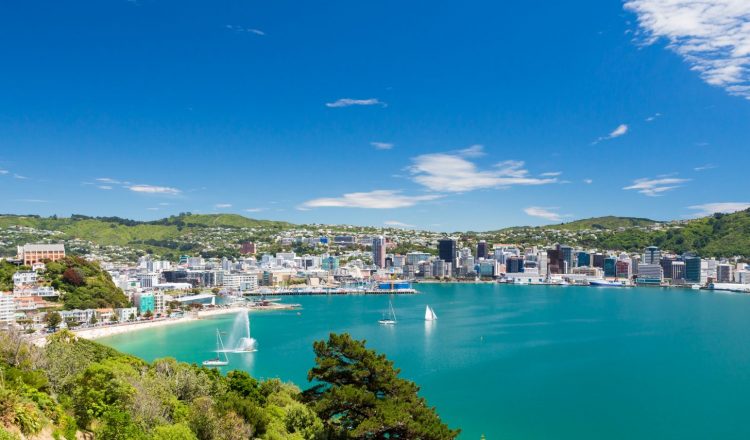뉴질랜드 사람들
뉴질랜드 사람들은 종종 키위(Kiwi)라고 불리우며, 이 키위라는 단어는 키위 과일(Kiwi Fruit), 키위새(Kiwi bird)와 같이 통용됩니다.
마오리, 유럽, 태평양 섬 및 아시아 문화의 역사를 가진 뉴질랜드는 멜팅팟(melting-pot)으로 변화했지만, 이는 곧 독특한 통일성을 가진 민족이 되었습니다. 오늘날 뉴질랜드인 440만 명 중 약 69%가 유럽 혈통이고, 14.6%가 이 곳의 원주민인 마오리족, 9.2%가 아시아인, 6.9%가 태평양 섬 주민입니다.
파케하(Pākehā)
파케하 뜻: 주로 유럽계 뉴질랜드인을 가리키는 마오리어로서 피부가 하얀 사람, 또는 마오리족이 아닌 (유럽계)뉴질랜드인을 지칭합니다.
파케하 문화는(일반적으로 유럽 문화를 지칭) 주로 영국인, 특히 19세기에 뉴질랜드를 식민지화한 영국 정착민들에서부터 시작합니다. 1950년대까지 많은 파케하들은 자신들을 영국인으로 생각하였으며, “모국인 영국”과의 문화적 유대감을 강하게 가지고 있었습니다. 반면 뉴질랜드에서 태어난 (유럽계) 사람들은 영국 본토 사람들보다 육체적으로 더 강하고 높은 적응력을 갖추었다는 인식이 보편적이었습니다. 뉴질랜드 초기 농촌 생활로 인해 뉴질랜드 사람들은 다부지고 부지런하며, 역경을 헤쳐나가는 사람들이란 이미지가 생겼기 때문입니다. 파케하 문화의 또 다른 특징은 영국 계급 체계와는 달리 평등주의에 입각한 전통을 따른다는 점입니다. 파케하 문화에는 아일랜드, 이탈리아 및 기타 유럽 민족 문화 뿐만 아니라 다양한 비(非)민족 문화에서 파생된 문화도 포함되어 있습니다.
1980년대부터 파케하들은 그들의 독특한 전통을 더 깊이 탐구하기 시작했으며, 뉴질랜드에는 마오리인이나 영국인이 아닌 또다른 문화가 있다고 주장하였습니다. “키위아나(Kiwiana)”로 일컫어지는 이것은 포후투카와(Pōhutukawa, 뉴질랜드 크리스마스트리), 파아쉘(Pāua-shell, 전복껍데기) 재떨이, 버지비(Buzzy Bee, 아동용 장난감), 파인애플 럼스(Pineapple Lumps, 초콜렛 간식), 고무 장화(Gumboots), 샌달(Jandals) 등과 같은 뉴질랜드의 상징적인 키위 요소들이 대표적입니다.
마오리(Māori)
마오리족은 뉴질랜드의 원주민으로서 1250년-1300년 사이 여러 번의 카누 항해를 통해 뉴질랜드에 도착한 동폴리네시아 섬 출신의 정착민들과 함께 그 기원을 찾아볼 수 있습니다. 마오리는 수백 년 동안 독특한 문화를 발전시켰는데 하와이키(Hawaiki, 열대 지역 폴리네시아의 신화 속 고향)에서 온 거대한 바다 카누(와카, Waka)의 긴 항해가 입으로 전해져 내려오고 있습니다. 마오리 신화는 신과 영웅들 간의 독특한 서사가 뒤섞여 있고 폴리네시아의 모티프와 그 궤를 같이 합니다. 중요한 인물로 랑기누이(Ranginui), 파파투아누쿠(Papatūānuku), 마우이(Māui), 쿠페(Kupe)를 꼽을 수 있습니다.
대부분의 행사는 마라에(Marae)에서 열리는데, 포휘리(Pōwhiri)나 탕이(Tangi)와 같은 특별한 날 가족과 부족들이 마라에로 모입니다. 마오리족은 종종 스스로를 “땅의 사람들”이라고 부르며, 육지와 바다가 연결된 생활방식을 특히 중요하게 생각합니다. 이들이 가진 전통 가치로는 공동 생활, 나눔, 자급자족 생활 등이 있습니다.
마오리의 독특한 가치와 역사, 세계관은 하카(Haka), 따모코(Tā moko), 와이아타(Waiata), 조각공예, 직물공예, 포이(Poi) 등과 같은 전통 예술과 기술에 녹아 있습니다. 타푸(Tapu, 금기시되는 것, 신성한 것) 라는 개념은 사물, 사람, 심지어 산에도 적용되는 마오리 문화의 강력한 정신이기도 합니다.
기타 소수 민족

















































